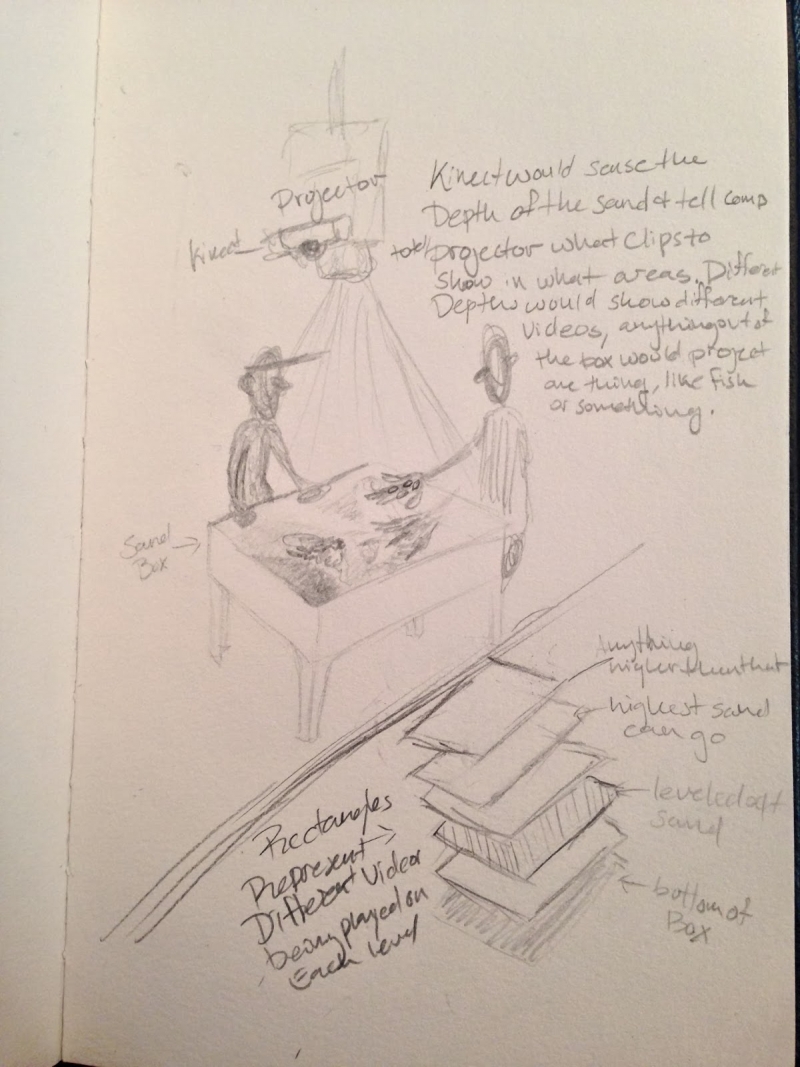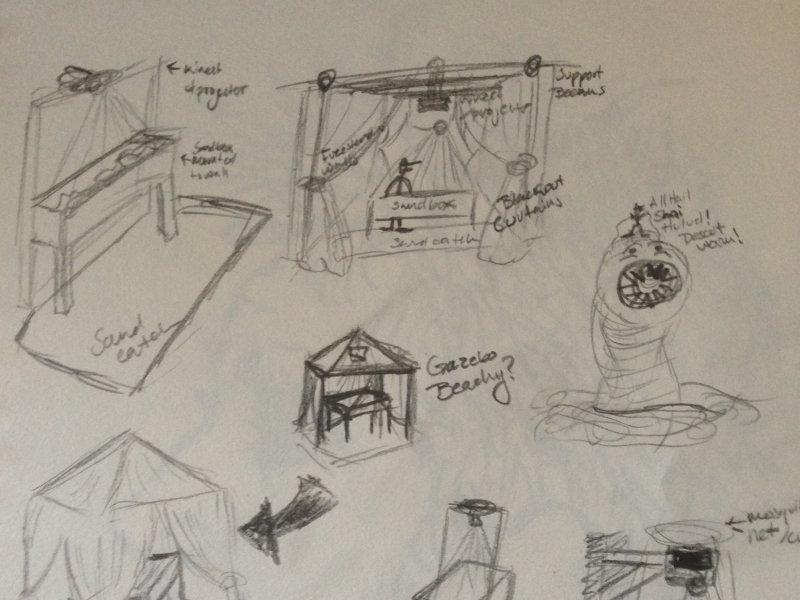Crazy Random Change of Plans!

I realize that at this point this means I’m going to have to write up an entire annotated bibliography and a cohesive, logical proposal paper in the span of about twelve hours, but I’ve found inspiration in this new idea that I’ve been lacking with the Fire Safety thing.The last couple of days, maybe even since I came up with the Fire-Safety idea, I’ve been lollygagging around constantly trying to think of how to write my paper, and I’ve been really distressed because I’ve realized that everything that I want to teach as far as fire safety goes are things that I’ve been able to list off for years simply from children’s television shows I watched as a kid and elementary school visits from “Sparky the Fire-Safety Dog.” That being said, it was really hard to get excited about working on a cool project that seemed like it wouldn’t really help anyone out. It didn’t help that every time I thought about how a giant charred maze would look in a gallery I cried a bit inside. The visuals I was coming up with were not appealing to say the least. To be honest, the only reason I ever settled on that idea was because I felt like it was something that I could at the very least pass with, but I want something more than that. I want a thesis that shows off my self-proclaimed cleverness, something that is sleek and beautiful and changes people when they see it, and to me that means making a sand box. Teehee.This idea was inspired by a couple of things, and it’s going to take a while before it makes sense, so please bare with me!It started with this fascinating form of interface, called the Aquatop, which can be found HERE. They essentially used a projector, a kinect, a tub of water and some opaque bath solution in order to make a fully tactile interface. Users could physically submerge their cupped hands around photos and documents, and then move them around the screen, along with a series of other touch-based uses. It even had some games that took hand gestures into account, and utilized everything in its environment from user’s fingertips poking out of the water to a physical rubber ducky floating in the middle of its interface. It was inspiring, beautiful and clever. It looked fun, and despite my lack of knowledge in how it worked I found myself wanting to experiment with it, and play with it myself.Maybe a week or so after finding out about the Aquatop, I was sitting in Eric Waldemar’s Transmedia class listening to him explain a Video DJ program, I believe it was called Serato. He wanted us to experiment with mixing video clips of abstract films we had created live to music of our choice with the software, and I couldn’t help but wonder how interesting it would be to make it so that the viewer could do this, could be the video DJ, who are apparently also known as VJ’s. The software allowed you to expose different layers of the video clip in time to whatever part of the music you would select, like the bass beat or vocal pitch changes, so I started wondering how you could cause change in the visual that was being produced, perhaps without an audio cue as that might be a difficult constant for the viewer to maintain. It would be virtually impossible and somewhat pointless just to set up a computer with this software and your video clips in a gallery, as people rarely understand how to operate new software off the bat, and this particular program was rather complicated. How, then, could users interact with your video clips, and make something interesting with it?I started thinking about the Aquatop. It was a simple interface, and people certainly felt the inclination to play with it, but it would be rather difficult to make it show different layers like the VJ software in a way that made sense. Thinking about the video as layers made me think of projection mapping, so I started thinking it would be cool if they could build something to project onto, like legos or clay models, or maybe just a lot of mud. Legos, however, would take time to assemble each piece, and clay might be perceived as requiring skill to use, which could scare off the viewer, and the last thing I wanted was for my piece to make people feel inadequate. Mud seemed really close, but I wanted something that would be really easy to play with, and then I thought of sand. Sandboxes are one of those things that are virtually impossible to play wrong in. If I used white sand it would be very good for projecting onto, and it would give the viewer a simple way to interact with any of the video clips you’d provide for them.
What you see at the top of the page is a little visual of what I have in mind. The Kinect would sense the depth of the sand and tell the computer, which in turn would tell the projector, what clips to show in what areas. Different depths would show different videos, anything protuding out of the box like hovering hands would project one thing, like fish or something.
Of course, the problem with this idea, and why it took me so long to decide to switch to it, was that I couldn’t figure out how it could be used to solve any problem. It wasn’t until today, when my mother asked me to “fix” her iPhone, that I started to realize that there was a very real problem that afflicts countless homes and annoys teenagers and IT workers across the nation. It is a crippling fear of technology, the gnawing dread that they’ll “ruin it” if they try to change anything, and my mother’s concern that she’ll “mess up google” if she types something into the browser.
I want to create something that seems fool-proof. I want people to look at it and not even question their ability to interact with it. I want them to realize that any “mistake” they make is easy to undo, easy to fix, and that they have the ability to fix it. I want to give them a gateway to learning, a porthole through which they can begin to understand that technology isn’t that daunting, and if they take the initiative and believe in their abilities, they can fend for themselves.
I don’t believe that my sandbox will be the end-all answer, that it will automatically give people the power to code an entire operating system that suits their needs or design an interface for an application that they’ve always wanted, but I do believe it will give them the courage to maybe open up Internet Explorer and install Google Chrome, or maybe learn how to use YouTube tutorials to create an Excel Spreadsheet. This project will be as much about my process of how I learn to achieve my goals as it is about what my project gives to the people that get to see it, and I hope to show how much you can achieve if you’re willing to look it up.


